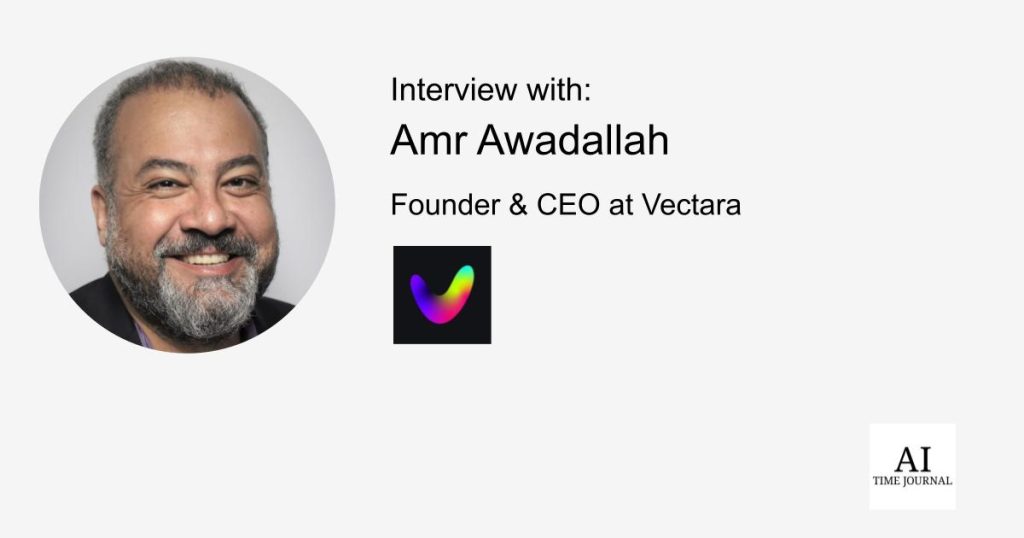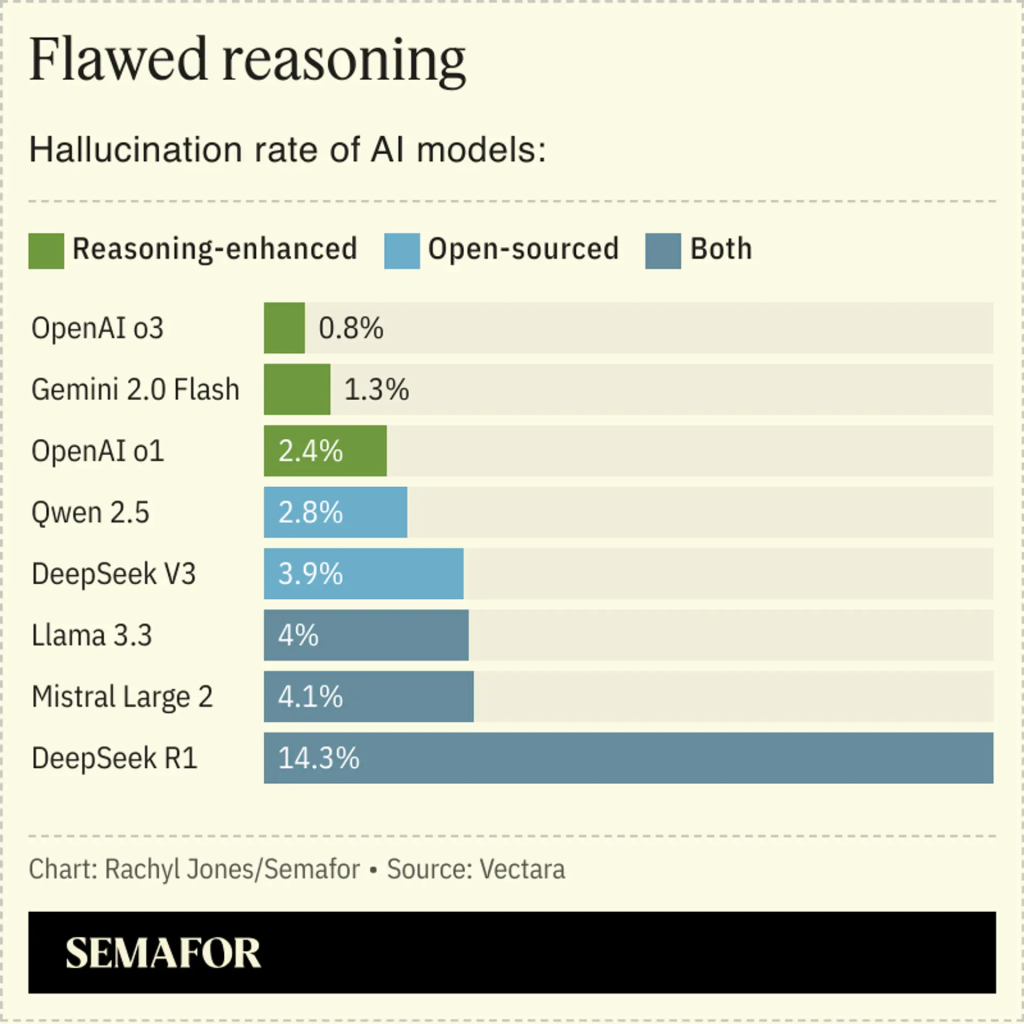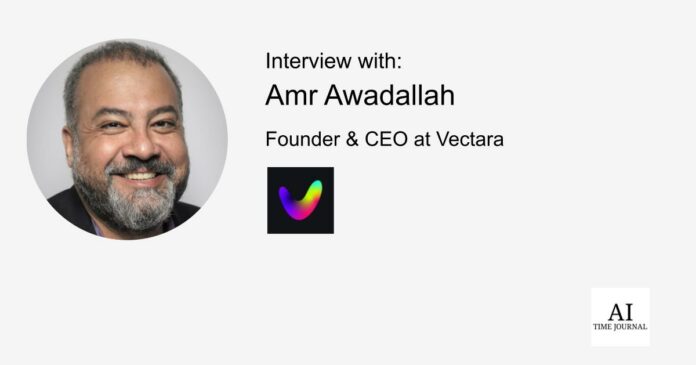
Amr Awadallah, Founder & CEO of Vectara, has spent his career at the forefront of big data and AI, from co-founding Cloudera to leading advancements in AI accuracy. In this conversation, he discusses the evolution of AI-driven search, the challenges of AI hallucinations, and the role of fact-checking in ensuring reliable outputs. He also shares insights on privacy risks, the future of AI in business, and the competitive landscape for AI entrepreneurs. Read on to discover his insights into the future of AI, the challenges companies face in adapting to it, and the dynamic conversation that unfolded at the HumanX conference.
Discover more CEO interviews here: Emil Eifrem, Founder and CEO of Neo4j — Challenges in Neo4j Development, Community-Driven Marketing, Graph Databases for Businesses, AI Integration, Klarna Case Study, and Startup Founders’ Advice
Hi Amr, could you start by sharing a bit about your career journey?
Certainly. I spent 12 years at Cloudera, where I was one of the founders. Cloudera was one of the first big data companies, and over those 12 years, I saw the company grow from four founders to over 3,000 employees. We went public on the New York Stock Exchange in 2017 and were later acquired by a private equity firm in 2021.
After Cloudera, I joined Google. I knew I wanted to start another company, but I wanted to take a break first. Starting a company is stressful—not just the workload but the pressure of managing investor expectations and employee livelihoods. So I decided to work at a large company where I wouldn’t have to carry that stress.
More importantly, after being so deeply focused on big data for 12 years, I felt my perspective had become narrow. I wanted to broaden my view of the tech industry. I specifically chose to join one of the major hyperscalers—Google, AWS, or Microsoft—and landed a role at Google Cloud. This turned out to be a great choice because it was there that I encountered cutting-edge AI developments, including Google’s chatbot Mina.
You mentioned Mina—what was your impression of it?
When I joined Google in 2019, they had a chatbot called Mina, which was as impressive as ChatGPT—despite ChatGPT coming out two years later. Google was cautious about launching it at the time, a decision they now regret.
When I first tried Mina, I was amazed. It felt like we finally had software that could speak, reason, and understand like humans. However, I quickly noticed a major flaw—hallucinations. The chatbot would generate responses that sounded accurate but were factually incorrect.
This is acceptable in creative contexts like fiction or marketing, but it’s a serious issue in fields like medical diagnosis, legal contracts, or financial statements. That challenge inspired me to build a solution that ensures AI can provide reliable information in enterprise settings.
How does your company address the challenge of AI hallucinations and ensure accuracy?
We approach the problem much like humans do when preparing for an exam or writing factual content.
First, imagine you have a chemistry exam tomorrow. What do you do today? You study. Even if you’ve attended lectures and done the homework, you refresh your memory to improve your accuracy in the exam. Similarly, our system retrieves relevant information before generating a response, grounding the model in verified facts.
Second, just as journalists rely on fact-checkers to ensure accuracy before publishing articles, we use a specialized hallucination detection model. This model reviews the AI’s output, compares it with the verified facts, and assigns a confidence score. A 100% score means the answer is fully grounded in facts, while 0% signals that the response is highly unreliable.

Do you see this fact-checking method as a long-term standard for AI systems?
Absolutely. In the future, AI will always need to separate “thinking” from “knowledge.” The reasoning engine should excel at processing information, while a separate system ensures the facts behind those conclusions are accurate.
Given the rise of AI, there’s growing concern about ethics, privacy, and misinformation. How do you address these challenges?
Beyond accuracy, we focus on privacy and security. One major vulnerability in language models is prompt attacks—similar to social engineering in cybersecurity. For example, someone might manipulate the AI by claiming an emergency to access confidential information.
To prevent this, we’ve developed a guardrail model that intercepts outputs and blocks unauthorized data from being shared. We also monitor for biased responses, ensuring decisions aren’t unfairly influenced by attributes like race or gender. Reinforcement learning techniques help train the model to recognize and avoid such errors, but our guardrail system acts as a final safety net.
With AI now integrated into countless industries, what role do you see it playing in the future?
AI today is what software was 50 years ago—an emerging technology that’s destined to become an essential part of business. Eventually, AI won’t be seen as special; it will simply be how businesses operate. Just as every successful company today relies on software, every company in the future will rely on AI.
You’ve had extensive experience working at Yahoo, Google, and now your own company. How has AI-driven search evolved since those earlier days?
The biggest shift has been the flexibility of modern AI. Five years ago, solving specific problems required custom-built algorithms. Today, large language models can be adapted to solve a wide variety of tasks using the same core model.
For instance, when Google Maps tells you to turn left or right, that’s AI in action. Years ago, Google had to build a specialized AI system just for navigation. Now, with large language models, the same underlying technology can tackle diverse tasks—be it cooking, fashion advice, or legal analysis.
You mentioned using Meta’s AI-powered Ray-Ban glasses. How has that impacted your experience with AI?
These glasses are remarkable. For example, I can ask them about a landmark I’m looking at, and they’ll provide detailed information. They even offer fashion advice by analyzing what people are wearing.
What excites me most is that this technology puts an AI assistant right in my head, making information accessible at any time.
Many people fear that AI will threaten their privacy. What are your thoughts on that?
That fear is understandable. People often fear the unknown, and movies like The Matrix and The Terminator have fueled concerns about AI. However, AI has quietly been improving our lives for years—whether it’s spam filters in email or fraud detection in credit card transactions.
The real danger lies in ignoring AI altogether. My advice is to embrace the technology, learn how to use it, and leverage it to boost your productivity. The risk isn’t that AI will replace you—it’s that someone who understands AI will outpace you.
What advice would you offer to entrepreneurs, especially those developing AI platforms in today’s competitive market?
Entrepreneurship thrives on competition, and I believe that competition drives innovation. If I had to highlight one crucial quality for entrepreneurs, it’s grit—the combination of passion and perseverance.
Passion ensures you love what you’re working on, which drives better results. Perseverance helps you push through setbacks. You will stumble, face competition, and encounter obstacles, but grit will keep you on track to achieve your goals.
Finally, is there anything else you’d like to share?
I’d encourage anyone exploring AI to check out the Hallucination Leaderboard above. It tracks major AI models, including GPT, Gemini, and others, showing their accuracy rates. Depending on your needs—whether you’re creating marketing content or building an enterprise solution—you can choose a model that best fits your objectives.




